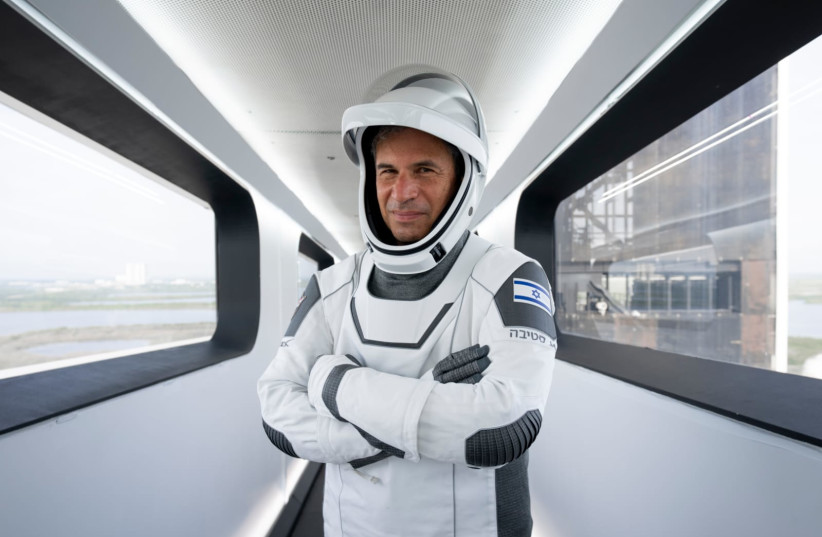SpacePharma, an Israeli start-up company that developed a miniature laboratory to conduct experiments in microgravity, launched its fifth mission to space last week.
The spacetech company’s lab was loaded aboard the SpaceX Falcon 9 Axiom-1 rocket and brought to the International Space Station (ISS) to be used by clients from Israel and the US.
In an interview with The Jerusalem Post, SpacePharma co-founder and CEO Yossi Yamin elaborated on the importance of the mission, the logistical headache of getting something aboard the ISS and the dream of seeing one's work sent to space.
JPost: The purpose of this latest launch was to enable your clients to test in space. What’s the significance of experimentation in orbit?
Yamin: “There are various reasons to run experiments from orbit in microgravity: First, there is no convection dissemination or shear force in orbit; as such, we can expedite reactions related to a tissue cultural growth. By having those factors within a specific experiment definition, we can provide answers, data or imagery that scientists can compare to reactions on Earth.
“Any clients on Earth can access the system as it was in the other room; we can provide a very reliable system in orbit that can activate, execute and collect data from different sensors – like temperature, pH imagery, spectrometry – in very precise volume management.

“We have a VPN [virtual private network] control connected to our software, and clients can intervene once they see something good or bad. If it’s good, they would like to repeat it. If it’s bad, they would like to fix it. We’re very happy to provide this technology directly to the client under the different and extreme conditions of space.”
How does working with the ISS fit into SpacePharma’s mission statement?
“SpacePharma started with the goal of having miniaturized laboratories within autonomous satellites. Since we established the company, we have had two such laboratories in orbit, which are not inside the ISS. Then we adopted five ISS missions.
“This is our fifth mission to the ISS, where we work with a variety of clients, like the NIH, NASA and a few other research institutions, like hospitals, mainly from the United States. I’m very happy to say that we are certified by all the big space agencies to fly into the ISS.
“Very soon, we are going to see that the space domain is going to capture a bigger and bigger stake within medicine and pharmacology formulation technology. I’m talking about mini-shuttles, which are like little SUVs about 4.5 meters in length, and those will allow SpacePharma to carry up to 100 kilos per mission flight and to provide up to 60 production lines for a variety of clients to produce.
“Those mini-shuttles are unmanned, and at the end of an eight- to 12-week mission, it will be able to land softly on the runway. This is the vector of the company right now; the ISS is another milestone toward achieving this.”
Logistically, how has it been to collaborate with these large space agencies?
“The hardest thing is to make a system base-ready. Logistically, we need to do a lot in parallel: We’re squeezing the technology, the hardware, the software and the final system configuration into the ISS according to the clients’ specification and requirements. And at the end, we need to shape it into our laboratory that is going to be placed in orbit.
“It needs to survive the intense G-force, shock and vibration, and it also needs to survive a few days [leading up to and during space flight] without power. We defined a very delicate solution for that: We splash nutrients onto the stem cells and all the experiments during the waiting period, so the life-science materials can survive up to seven days.
“As well, there is a lot of inspection on our technology. For example, if we’re using a ribbon, a vial or any other material, we must provide a certificate of compliance that the part or material or unit has been checked in space conditions [such as extreme temperatures], and only then are we allowed to put it inside.
“We also need to provide data information related to the life science or the chemistry of all media, reagents and nutrients that we’re using. This is a very, very big process, and SpacePharma is, to my knowledge, the only company in Israel that can do that – and one of few in the United States and Europe.”
From a personal perspective, how has it been to witness your technology being used aboard the ISS – one of the pinnacles of international scientific collaboration?
“Every launch for me is like delivering a baby. It’s inspiring; it’s a dream come true. It’s something that I can’t believe is touching more and more disciplines and players.
“When I get calls from clients – Israeli entities, European entities, US players – it’s really, really inspiring. I can’t express how happy I am to see every launch, every client, every review, investigation – each taking the field to the next stage.”
